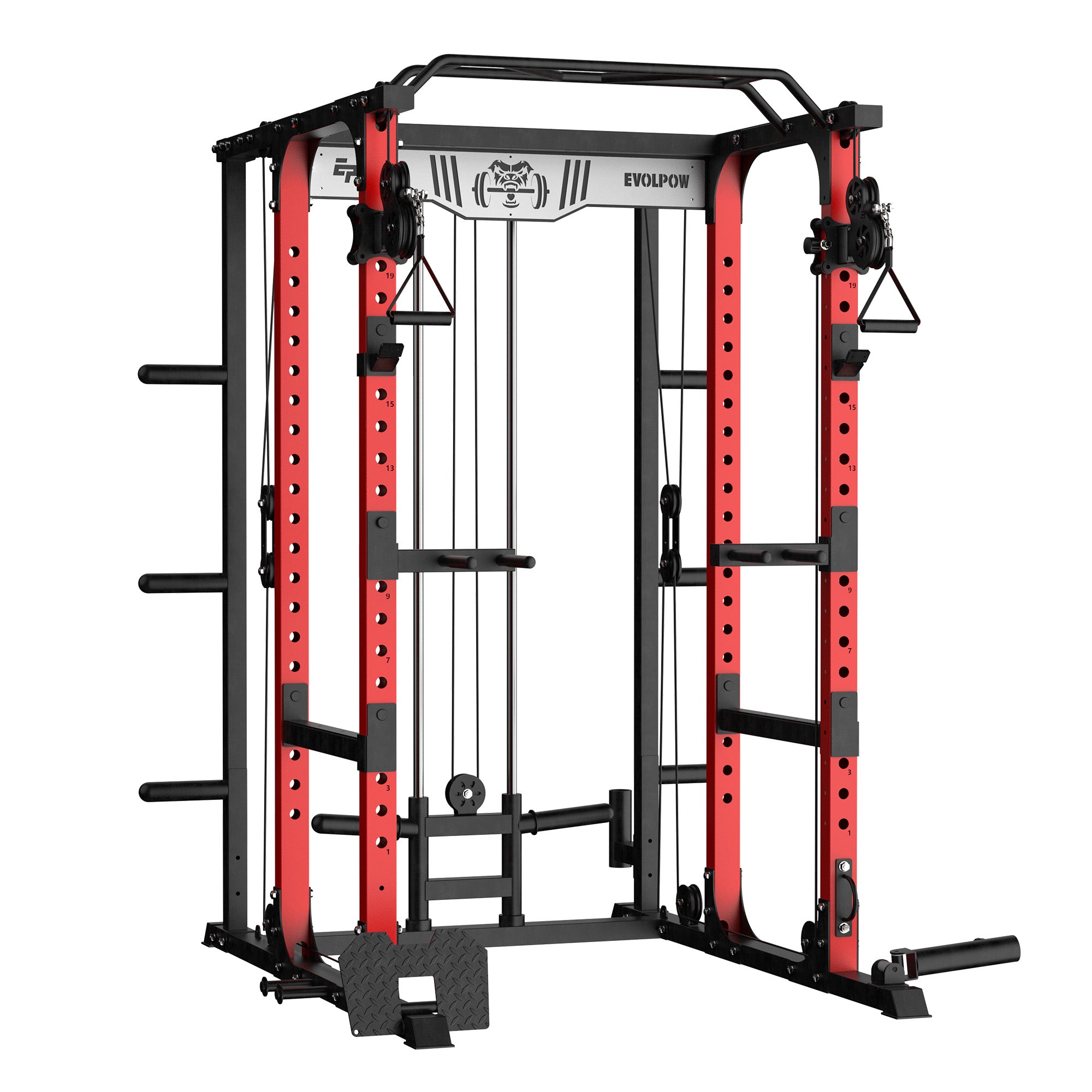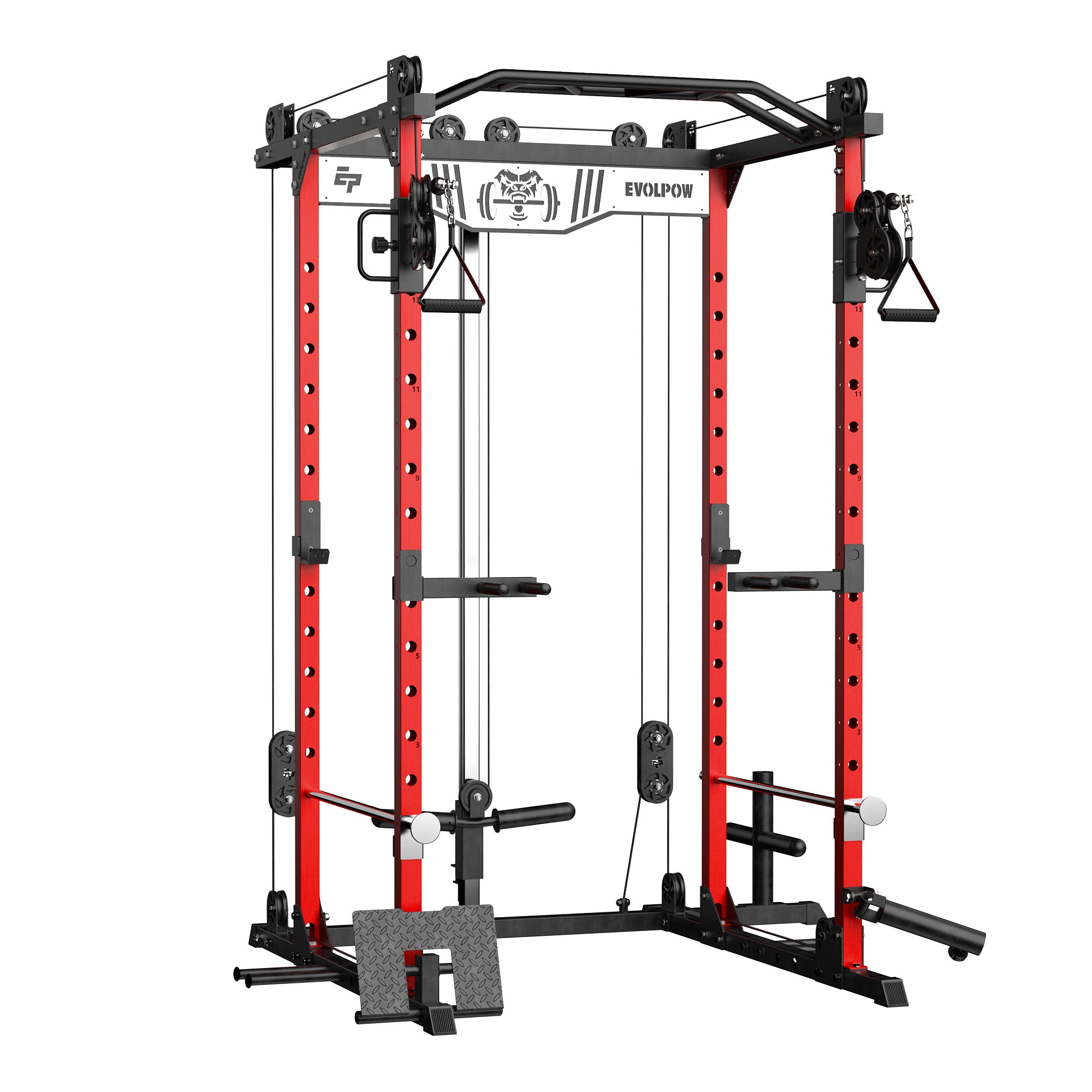Strong legs aren't just for looks—they're essential for overall athletic performance and everyday activities like walking. Additionally, leg exercises can prevent injuries by strengthening leg muscles, promoting joint stability, and improving balance. Whether you're working out at home or in a gym, creating an effective leg workout routine doesn't have to be complicated. With just a set of dumbbells, a barbell, or an adjustable bench, you can perform a variety of effective leg exercises at home. Let’s explore the 10 best leg exercises you can do at home.
The 10 best Exercises for legs at home
Squats
Squats are a fundamental exercise for strengthening the quads, hamstrings, glutes, and lower back. Plus, holding two dumbbells by your sides when performing weighted squats could intensify the workout. Do remember to maintain proper form by keeping your chest up, back straight and core engaged throughout the movement.

Lunges
Lunges target the quads, hamstrings, glutes, and calf muscles while improving balance, stability, and core strength. Step forward with one leg, ensuring your knee bends to approximately 90 degrees as you lower yourself, then push off forcefully to return to the starting position.

Deadlifts
This example uses a barbell, but you can also hold a broomstick to focus on form before adding the appropriate resistance for your fitness level. It also requires you to stand up straight using the muscles along the backs of your legs, lifting the barbell off the ground. Keep your arms straight so the barbell hangs at your hips at the top of the movement. Then lower the barbell back to the ground by bending the knees.

Step-ups
Lots of people regard step-ups as their favorite moves. Since many of them are big fans of stability and strength, and that's exactly what this move focuses on. During a step-up, you are activating your hamstrings, glutes, core, and stabilizers.
If you're new to this exercise, step on something low, then work your way up to something higher. To make step-ups harder, you can hold a dumbbell or kettlebell in each hand and do weighted step-ups. You can also do all your reps on one leg at a time (instead of alternating) to really burn out your glutes, quads, and hamstrings on that side. Anyway, focus on quality reps and good form first.

Box jumps
Box jumps belong to the category of plyometric exercises, characterized by high-intensity movements that require maximal muscular force within short intervals.
They can improve explosive leg power, meaning the ability to produce maximum effort, high velocity movements that allow you to jump, leap and sprint, as well as enhance cardiovascular fitness. Jumping exercises should only be performed if you already have a solid foundation of leg strength and completed a dynamic warmup, such as heel raises, step ups, lunges or hops in place first.

Bulgarian split squats
The Bulgarian split squat is sure to deliver big benefits to your lower body. With one leg behind you and elevated off of the ground, this exercise targets many of the same muscles as a traditional squat, but with an emphasis on the quads.

Calf raises
Calf raises strengthen the calf muscles. They can improve ankle stability as well as overall leg strength.

Glute bridges
When executed as a stabilization exercise, glute bridges serve to activate the gluteal musculature, enhancing their function in facilitating movements such as squats, deadlifts, walking, and running. The engagement of these muscles in a stabilizing capacity contributes to improved neuromuscular coordination and overall movement efficiency. Conversely, the progression of glute bridges with the addition of external resistance transitions the exercise into a strength-building modality. This augmentation prompts greater recruitment of muscle fibers within the gluteal complex, fostering hypertrophy and enhancing muscular strength. Such adaptations not only benefit performance in resistance training exercises but also contribute to functional movement patterns and overall physical capabilities.
By increasing glute activation and strengthening the glutes, not only will your form get better in other exercises, but you might also gain the added benefit of reduced low back pain in your daily life.

Single-leg squats
Single-leg squats target the quadriceps, hamstrings, glutes, and calf muscles, promoting lower body strength and muscle growth. Since they require no equipment, they're convenient for home workouts or when gym access is limited. Incorporating single-leg squats into your routine can contribute to functional strength, agility, and mobility.

Leg sled pushes
Leg sled pushes, also known as sled pushes or prowler pushes, involve pushing a weighted sled along the ground using primarily the lower body muscles. They are effective for developing lower body strength, power, speed, and cardiovascular endurance. They also engage stabilizing muscles and can be adjusted in intensity by varying the weight on the sled.

Cool down properly after workout
After completing your leg exercises, it's crucial to cool down properly to aid in muscle recovery and reduce soreness. To cool down after leg exercises, engage in 5-10 minutes of light cardio, followed by stretching major leg muscles for 15-30 seconds each. Use a foam roller on tight areas, hydrate, and eat a balanced meal for recovery. Prioritize rest to optimize muscle recovery and minimize soreness.
Conclusion
Incorporating these 10 leg exercises into your home training routine can significantly improve leg strength, stability, and overall athletic performance. From squats and lunges to deadlifts and single-leg squats, each exercise targets key muscle groups essential for functional movement and injury prevention. Remember to prioritize proper form and technique to maximize the effectiveness of each exercise. Additionally, don't forget the importance of cooling down after your workout to aid in muscle recovery and reduce soreness. By consistently integrating these exercises into your fitness regimen and following a comprehensive cool-down routine, you can achieve stronger, healthier legs and enhance your overall fitness level.
Q&A
Q: How many times per week should you work legs?
A: Indeed, les exercises should be performed regularly but rest is also important. Your muscles need that downtime to rebuild and get stronger. Shoot for those leg workouts two to three times a week, with at least one day of rest in between. It's all about finding that balance to keep those gains coming and avoid burnout.
Q: Can I build let muscle without weight?
A: Yes, but this can only be done by pushing your muscles to their limits. Push your leg muscles to their limits and as you progress, make your workouts harder by adapting the exercises and their difficulty. This is known as progressive overload. However, it's important to approach progressive overload gradually and safely to avoid injury and overtraining. Proper rest, nutrition, and recovery are also essential components of any effective training program.
Q: how do you warm-up for leg day?
A: Some great movements include walking lunges, tempo squats, PVC good mornings and glute bridges. Performing exercises like those above are like the ultimate warm-up squad for your legs, getting them all set for the hardcore session ahead.
References
https://www.healthline.com/health/fitness-exercise/lunges-muscles-worked
https://www.popsugar.com/fitness/how-do-step-ups-6483533
https://blog.nasm.org/how-to-do-a-glute-bridge
https://www.self.com/gallery/killer-legs-no-gear-required-slideshow
https://www.myprotein.com/thezone/training/how-to-build-leg-muscle-at-home/






